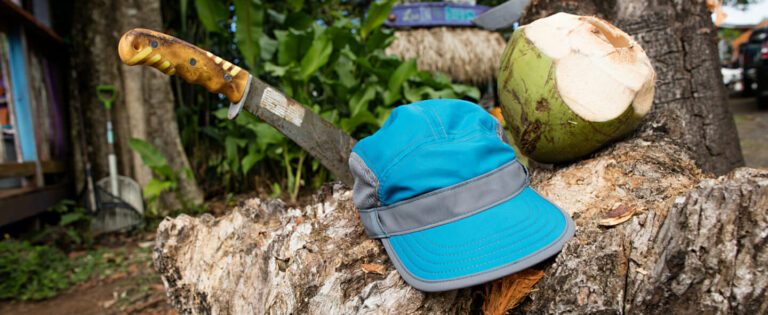While there is special equipment you need for via ferratas, like a via ferrata set, most of the stuff you need (clothing, a backpack or a harness) you probably already have, provided you’re into climbing or mountaineering. The one thing you may not have is the proper footwear. Proper footwear? Can’t you just wear the approach shoes you’ve used for alpine climbing in the past? Or maybe even those crampon-compatible boots you wore on your last mountaineering trip? Do „via ferrata boots” even exist? And if so, how do they differ from mountaineering boots? And most important of all: Are they even necessary?
Well, keep on reading and you’ll find out!
What’s the difference? What makes a boot a via ferrata boot?
Most via ferrata boots differ only in part from ordinary mountaineering boots and can be positioned somewhere between soft, lightweight approach shoes (which are more comfortable in the heat) and your normal walking boots. The lighter models are usually also suitable for some (easy) climbing, while the heavier ones work for (high-altitude) mountaineering as well. True, you can climb a lot of via ferratas in regular mountaineering boots, but it’s not recommended. If you do, make sure they’re easy and you don’t make a habit of it!
Via ferrata boots usually have a stiffer sole and a narrower upper than ’normal‘ hiking and trekking boots. These features make them more appropriate for climbing for long periods as opposed to walking long distances.
In other words, a good via ferrata boot is more of a generalist than a specialist. When climbing a via ferrata, not only do you cross bridges and climb up rock steps and ladders, but you also use normal hiking paths. And there are plenty of via ferratas that force you off trail or even into ice and snow. To be prepared for this kind of terrain, you should either have an extremely versatile shoe or even combine a flexible, lightweight pair of approach shoes with a stiffer, crampon-compatible mountaineering boot.
In general, a stiff boot that has a more rigid sole and puts your feet higher up off the ground allows for less precise foot placements. However, it does have the advantage of taking the strain off your muscles when you’re standing on small holds and bits of metal work. This is especially important for heavy-set individuals, as a softer shoe would make them expend much more energy. Simply put, the more direct rock contact there is, the softer the shoe should be. The more alpine the terrain, the stiffer (and more crampon-compatible) the shoe should be.
That being said, it’s always a good idea to keep the difficulty level of the via ferratas in mind before buying a pair of shoes. And, while doing so, ask yourself the following three questions: How long will the ascents/descents be? How long and challenging will both the via ferrata and the climbing sections be? How high will the route take you?
By answering these questions, you’ll know exactly what your via ferrata boot should be capable of:
What should your boots be able to do?
Well, they should allow you to stand stably on brand-new or rusty pins and other bits of metal work (i.e. ladders, stemples, wire bridges, etc.) and withstand heavier loads – not once, not twice but hundreds of times on each and every adventure you go on. In other words, the shoes need to be extremely durable, especially when it comes to the stitching and glued portions of the shoe.
It’s important to remember that there’s the approach to get to the via ferrata as well as the descent, so the boots should not only be stable and sensitive but also provide a good amount of cushioning and allow for a good heel-to-toe transition. These are the absolute musts:
- A high collar that goes over the ankles to prevent you from twisting your ankle in more technical terrain.
- The boot should fit snugly but still be as comfortable as possible. You need enough room in the toe box so that your toes don’t slam into the front on the boot on downhills. An easily adjustable lacing system is paramount as well. Boots with laces that extend down into the toe box are perfect.
Depending on both the terrain and the difficulty level of the via ferrata, you may need to consider other features as well. The selection of via ferrata footwear is pretty massive, ranging from all-round alpine boots to lighter, more comfortable approach shoes (which are „actually“ intended for approaches to climbing routes).
Regardless of the shoe you choose, the most important thing is that it fits securely and offers enough traction at the front of the sole for precision on small footholds, ledges, etc. For these reasons, slightly narrower models are often your best bet. In general, recommendations for via ferrata boots usually hover around category B or B/C boots with a climbing zone at the front of the sole.
Now, let’s go into a bit more detail on the individual parts of the shoes.
The sole
The sole not only has to be torsionally rigid, but suitable for climbing as well. It shouldn’t be too high or too thick to ensure that you still have enough ground feel. That being said, your only option is B boots with semi-rigid and mid-high soles or, at the very most, B/C mountaineering boots.
The outsole should not only provide enough traction on rock but also be grippy enough for approaches and descents in snow, damp meadows or steep terrain that is ridden with rocks and rock outcrops. I admit, it kind of seems like we’re asking for the moon, but fortunately for us, the soles can be divided into different zones, much like the human foot.
A sole that is divided up into different zones is one of the main features of good via ferrata boots. The front of the sole should be stiff enough for you to stand on small holds on those easy to intermediate via ferratas without expending a lot of energy.
The higher the grade of difficulty, the more flexibility you need at the forefoot, as flexibility is necessary for friction climbing. To achieve this seemingly impossible balancing act, boots have a small friction zone with no tread and a slight upward curve at the front of the sole. It’s usually just under the big toe (and perhaps at the inner ball of the foot).
Under the midfoot and heel, the sole should have deep lugs for grip on both the ground and the climbing aids. There should also be a pronounced depression – the so-called bridge between the ball of the foot and the heel to prevent you from slipping on wet iron bars and ladders.
The upper
The main difference between via ferrata boots and trekking or walking boots is a slightly narrower toe box. It should only give you enough room to prevent any nasty toe jarring when you’re descending.
Other than that, the kind of upper you need depends on not only the terrain and difficulty of the route but how high up the via ferrata is. A relatively „airy“ upper that allows for plenty of freedom of movement is good enough for those easy and fun via ferratas you’d find near valley towns. For high alpine via ferratas where lower temperatures and loose rock are no rarity, it’s always a good idea to opt for more protective footwear. These kinds of boots come equipped with a rubber rand that runs along the lower edge of the boot, which not only protects your foot but also increases the durability of the boot.
Ideally, the upper should be more adaptive and flexible than that of regular walking boots in order to allow for more variable foot placements. As surprising as it may seem, there are well-known brands out there, like Lowa or La Sportiva, that actually manage to create via ferrata boots that meet these seemingly contradictory demands.
As with mountaineering boots, the upper on a good via ferrata boot should be breathable and at least water-repellent. Of course, these properties are more important when it comes to mountaineering boots, since people tend to steer clear of via ferrata routes in unpredictable weather conditions. Those of you who prefer via ferrata day trips at lower altitudes could consider getting a pair of breathable via ferrata boots with a membrane-free mesh lining. However, for multi-days or high-alpine routes with snow fields, you’d have to go with a waterproof boot.
Textile or leather? Both!
You have the choice between leather and synthetic textile materials. Textile elements are less expensive because they are easier to make and manipulate, among other things, while leather is breathable and water resistant, even without a membrane, resulting in a more comfortable interior.
Oftentimes, the two are combined to take advantage of the specific properties of each material. Leather is ideal for the toe, heel and sole edges, as it is more dimensionally stable and abrasion-resistant, while textile is great for the tongue because of its softness, low weight and flexibility. Most of the via ferrata and approach shoes sold in Germany have an upper with a textile/leather combo and a membrane to top things off (usually GORE-TEX).
Lacing
A precise and easily adjustable lacing system is a must in order to get the fit you need in each and every situation. For this reason, good via ferrata boots have laces that extend down to the toe box. Other than that, the lacing system on via ferrata footwear is basically identical to that you’d find on “regular“ mountaineering boots.
The combination of eyelets at the bottom and lacing hooks at the top usually allow for plenty of variability. Plus, there are usually deeper hooks on the medial and lateral sides of the boot that ensure a locked-down fit. Laces that allow you to tighten the shoe from top to bottom in one go are nice but not necessary.
Just for the via ferrata?

If you’re planning on venturing into high alpine terrain beyond the via ferrata itself, then you will need different via ferrata boots. If the via ferrata takes you through ice and snow or even up to high peaks with a glacier on the descent, you definitely need a pair of crampon-compatible boots. For this, a strap-on crampon will usually do the trick. You can always refer back to the B and B/C categories mentioned above for more info.
Keep in mind that approach shoes, which can be great for those shorter via ferratas that involve more climbing, may be too soft for strap-on crampons, so you might want to ask before purchasing.
What do the experts say?
As you’ve probably already noticed, it’s hard to say what via ferrata boots you should go for without always qualifying it with a “it depends”.
To make the decision a little easier, here’s what some independent testers from the German Alpin Magazine have to say:
“People always say there’s no do-everything shoe, but a lot of brands today are coming really close. We were really impressed with the Scarpa Marmolada. It’s a very comfortable shoe that has good walking abilities, but comes into its own on the via ferrata, providing plenty grip and traction. The Garmont Vetta is a great option for via ferratists; light and grippy, but better suited for narrow feet. An all-rounder that we highly recommend.“
For those who need more flexibility, the magazine recommends the models Adidas TX Scope High and Five Ten Guide Teen Mid. According to the testers, they are „soft and flexible and require more strength to stand on small holds but is significantly less stable. The shoe is great for somebody looking for exactly that, but it’s nothing for newbies.“
Bergsteiger Magazine divides via ferrata boots into two weight classes:
- lightweight models for difficult (fun) via ferratas that weigh approx. 1,050 grams or more in a size 45 (10.5 UK).
- heavy alpine models that weigh at least 1,700 grams in a similar size.
You can also find some more info on our via ferrata packing list (in German only). If you have any questions, please feel free to leave them in the comments.









2 Comments on the Article
I will be tracking mountain gorillas in Bwindi Impenetrable Forest National Park in May. It involves climbing steep hillsides at high altitude in jungle conditions. Any suggestions for suitable boots, trousers and tops? Thanks!